Bike Position: Pro Men Conform
Here's a statement I hear in almost every F.I.S.T. Bike Fit class I teach: “It's pointless to consider how pro triathletes ride their bikes; my customers aren't pros and can't ride those positions.” These bike shop owners who attend my classes have it the other way around. It's the pros who can't ride their customers' positions. “You try to ride pro miles in an age-group bike position!”
The more a sport and a sporting technology matures the techniques of the top athletes converge. The variances diminish, and consensus is formed. What I hear when it comes to cadences, torque profiles, bike positions is, “Everybody's different.” Yes, in a micro sense. But in a macro sense it's truer to say everybody's the same.
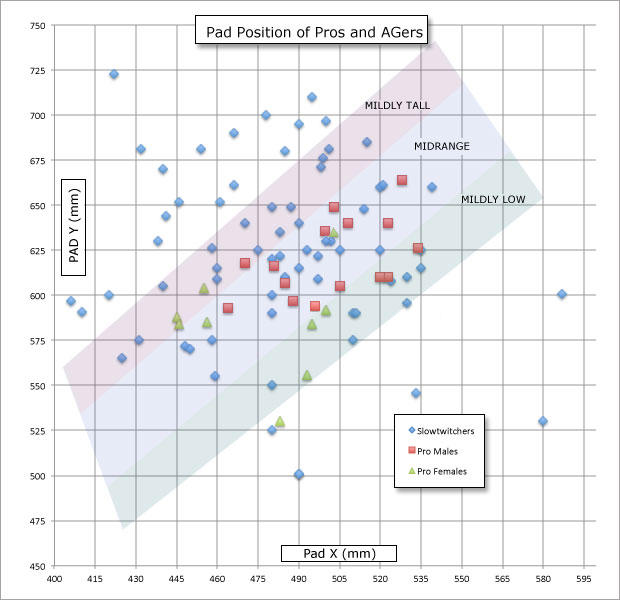
It's been many years since I've catalogued the positions of pro triathletes, and I've decided it's time to do it again. Certainly there is more to a bike position than Pad Y and X. Just as important are the hips fore/aft over the bottom bracket and the handlebar elevation as a function of seat angle and seat height. But the nice thing about Pad Y/X is that we can prescribe bike solutions from it. If I know your Pad Y/X I know precisely what bikes you can ride in exactly the appropriate front end (handlebar/stem) configuration.
What you see in the chart above are the first 25 or so pro positions as expressed in Pad position versus the bottom bracket. These are overlaid on the 75 or so positions of Slowtwitchers who've measured their bikes and provided me the numbers. What I hope you'll see, especially among the pro men, is that there's not a lot of variance in how they position themselves aboard their bikes.
In fact, below is a formula for calculating expected armrest drop among pros and I'll wager this formula holds true for the pros. It's not bulletproof, and about 15 years ago it morphed slightly to normalize for seat angle, but I show it here in all its graphic barbarity because these graphics were made more than 20 years ago, and the formula itself was generated in 1991, 4 years after the first aerobar hit triathlon and 2 years after the first Quintana Roo tri bike hit triathlon. This is simply to show that many pros had the right seat angle, armrest drop, and so forth, figured out by then. You don't need decades. You put in a few 400-mile bike weeks on aero bars and you'll figure out pretty quickly what works and what doesn't.
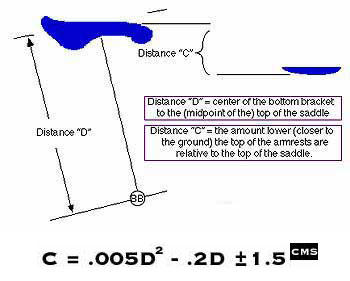
Back to the chart above, Pros and age group racers competing in half and full distance triathlons will sit slightly further forward or back, and slightly lower versus higher. Where along the gradient of back to fore, high to low? Below is Andy Potts. Twice. Which Andy would you rather be? One is from 2012, the other 2015 and I shouldn't have to tell you that the left hand picture is more current, except that he now rides a Cannondale Slice. Andy's position sits dead center in the range in the chart above, but I suspect were we to use the Pad placement of the position on the right it would be different. In this case Andy's data point in the chart above would sit higher up and further back (to the left), that is, in the Mildly Tall range, or even high and back and out of that range entirely. This is the maturation of a position, and because of the work of Mat Steinmetz (who fits Andy) we can see how this position has morphed into the professional position it is today.
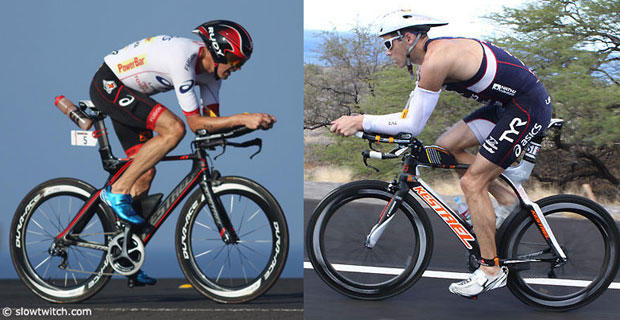
As we see, the typical Slowtwitcher's position is, well, there is no typical Slowtwitcher position. Age group racers are all over the place. There are three reasons why these age group positions are so variant. First: Morphology. Longer-leg riders have taller saddles which pushed the armrests tall as well. That rider's shorter torso means the pads are not so far in front of the BB. Long-leg, short-torso riders will have pads in the mildly tall range even though they'll have at least as much armrest drop as someone in the blue zone above, or the long-and-low green zone.
The second variable is where you sit around the face of the clock. Look at the two Andy pics above. His body angles are not much different, one pic to the next. Internally, using his own body as a reference point, he's not much changed. But if you rotate his body forward around the face of the clock his pads get further in front of the BB and they get lower. This is what the left hand drawing just below illustrates. This is why fitters have to be careful not to rely only on body angles: hip, shoulder, knee, etc. These angles do not consider whether the body is rotated back or forward. This is why seat angle and armrest drop are external to body angles, and are as important as body angles.

In the right hand side of the drawing above is a rider who is in danger of having a good position, but his pad position is too stretched and too high. His shoulder angle is too obtuse. If he simply drops his pads he won't find comfort. But if he both drops his pads and brings his pads closer in, then he'll find comfort and power, and maybe through an even lower pad position.
Note that the left hand image fixes a problem without really changing body angles, rather rotating the body forward. This was the Andy Potts progression – the bars came down as the saddle came forward.
The second issue has nothing to do with seat angle, or hips position; we aren't changing seat angle; we are changing body angles.
in the drawing at left, when we fix this position the data point on the chart above starts high, and drawn back toward the Y axis. As we rotate the rider forward the point hits the midrange zone, and if you keep rotating it it hits long-and-low. The drawing at right, this moves the data point in a different way: down back back. But bike fitting is not so cut-and-dried. Sometimes during a fit session I'm dealing with both issues in the same rider.
As pro athletes fix these problems they tend to end up with positions that conform very much one to the other, and it's rare you see data points far afield from the midrange zone in the chart above.
Now, the pro women, they are a bit more variant than the men. There are reasons for this, which I'll explain in a separate article; and I'd like to get a few more data points before I do address this athlete cohort.


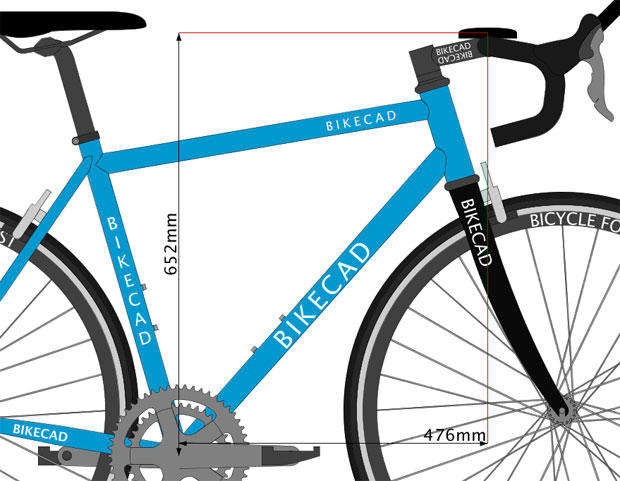
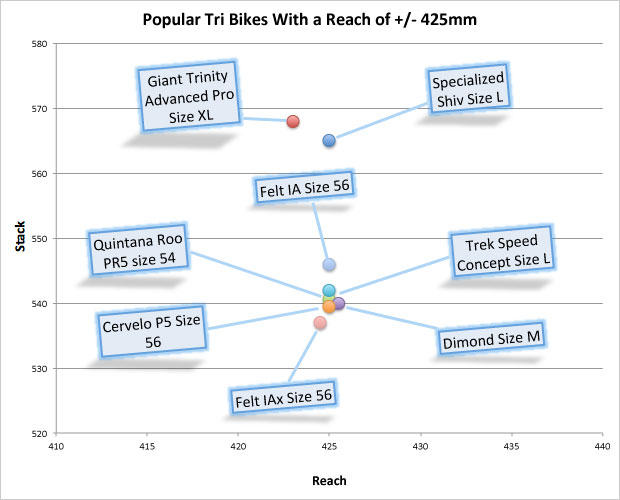
Start the discussion at slowtwitch.northend.network